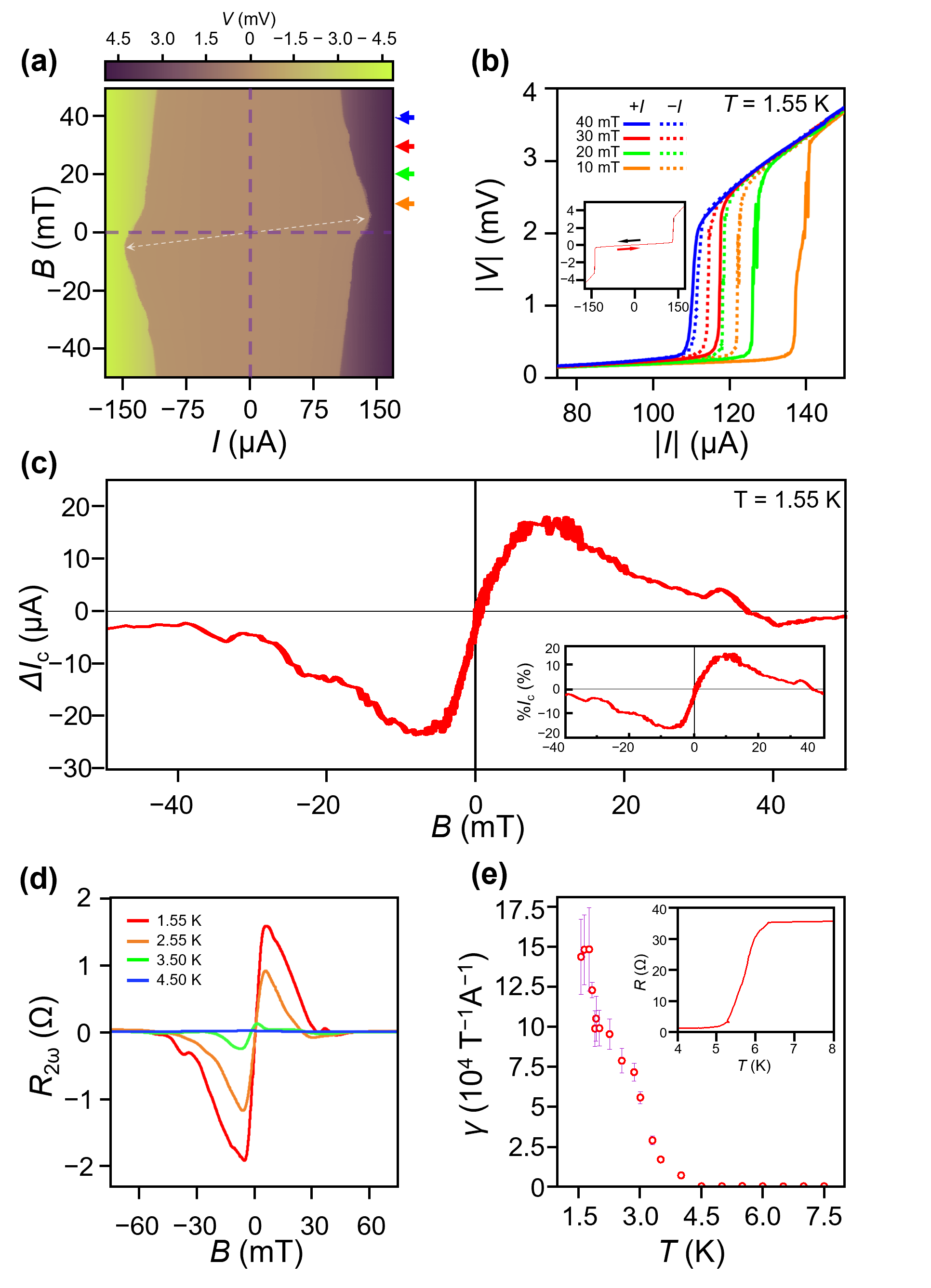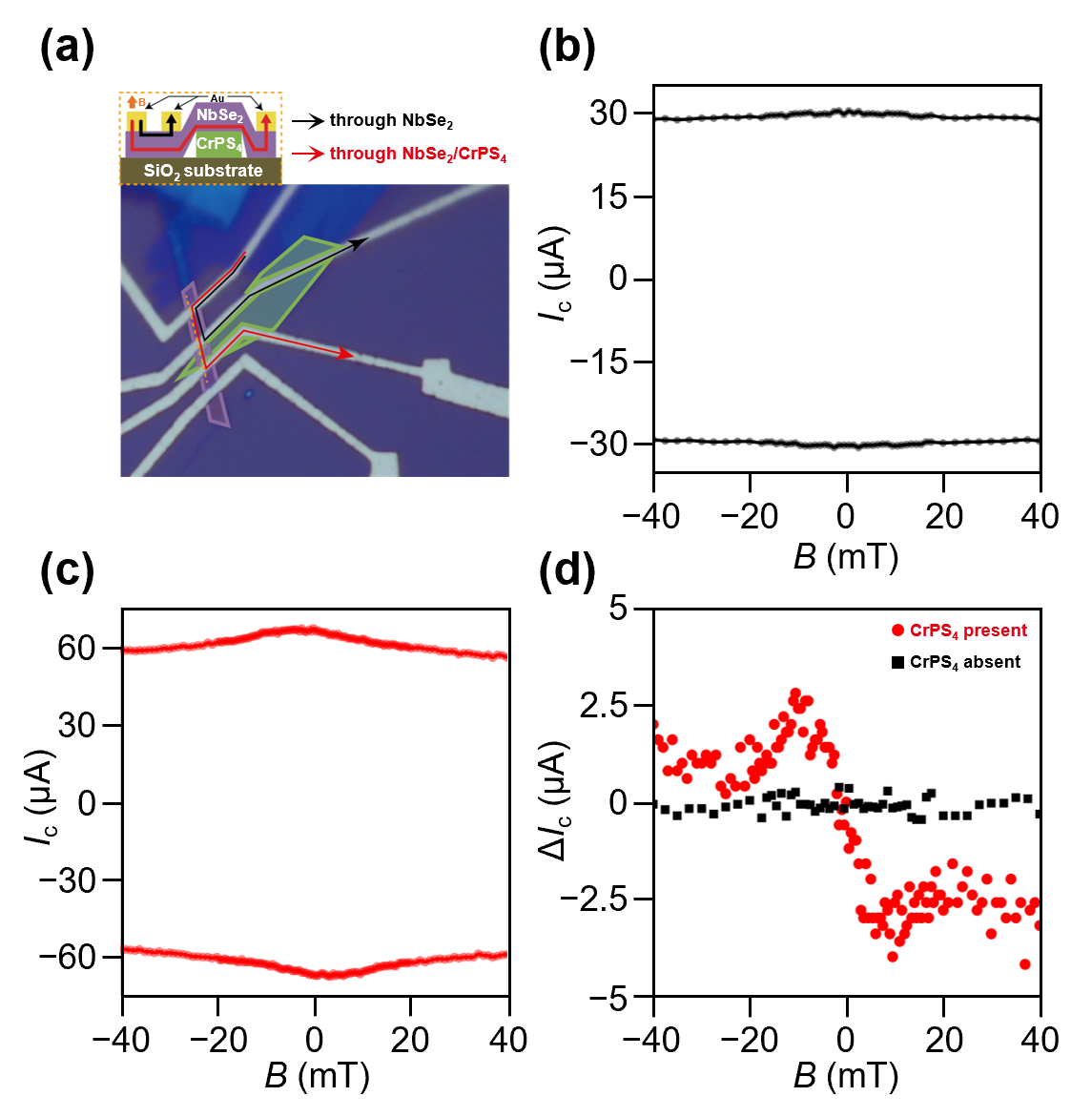Superconducting Diode Effect in a vdW heterostructure Nov. 2020 – Nov. 2021
⌜Observed a magnetic proximity-induced superconducting diode effect (SDE) and infinite magnetoresistance in a van der Waals (vdW) heterostructure. Characterized nonreciprocal critical currents with efficiencies up to 40% in a NbSe2/CrPS4-based spin-valve device. Gained comprehensive skills in low-temperature transport measurements using a Teslatron PT cryostat and various low-noise electronics.⌟
This project was my first project to advanced low-temperature transport measurements as a new graduate student.
The primary goal was to master the essential toolkit for characterizing novel quantum materials.
During this work, I became proficient in operating an Oxford Instruments Teslatron PT cryostat, including managing its superconducting magnet and implementing safety protocols against quenching.
I gained extensive hands-on experience with a suite of low-noise measurement instruments, including lock-in amplifiers, Yokogawa DC sources, and Keithley nanovoltmeters, as well as practical skills like wirebonding.
The devices themselves were expertly fabricated by my collaborator, Dr. S. Son.
The scientific goal was to investigate the superconducting diode effect (SDE), a fascinating nonreciprocal phenomenon where a material's critical supercurrent depends on the direction of current flow.
This effect requires the simultaneous breaking of both inversion and time-reversal symmetries.
A vdW heterostructure, which interfaces a 2D superconductor (NbSe2) with a layered antiferromagnetic insulator (CrPS4), provides an ideal platform to engineer these broken symmetries via the magnetic proximity effect.
In a bilayer NbSe2/CrPS4 device, my measurements revealed a clear nonreciprocal critical current with a diode efficiency of up to 16%.
To further enhance the effect, I characterized a trilayer spin-valve device (CrPS4/NbSe2/CrPS4), which exhibited a significantly larger efficiency of up to 40%.
Furthermore, this spin-valve structure displayed an infinite magnetoresistance ratio that was switchable depending on the magnetic field sweep direction.
These results, published in Physical Review Research, demonstrate a powerful method for realizing and controlling nonreciprocal phenomena in 2D materials via magnetic proximity effects.

